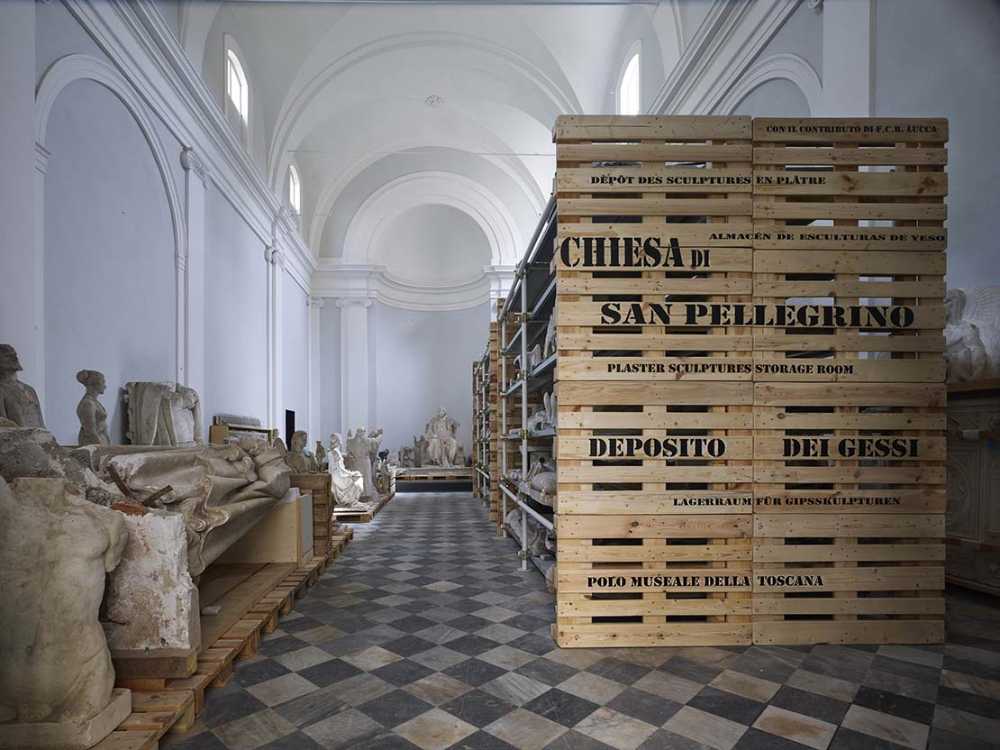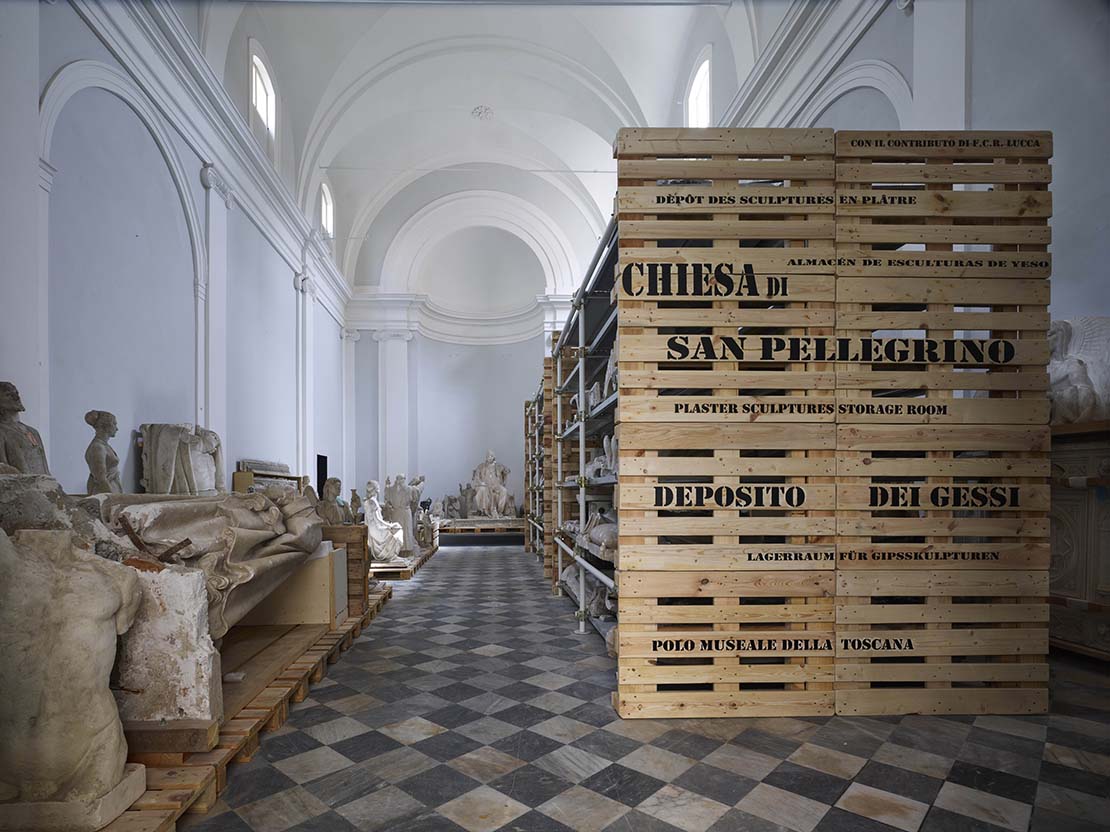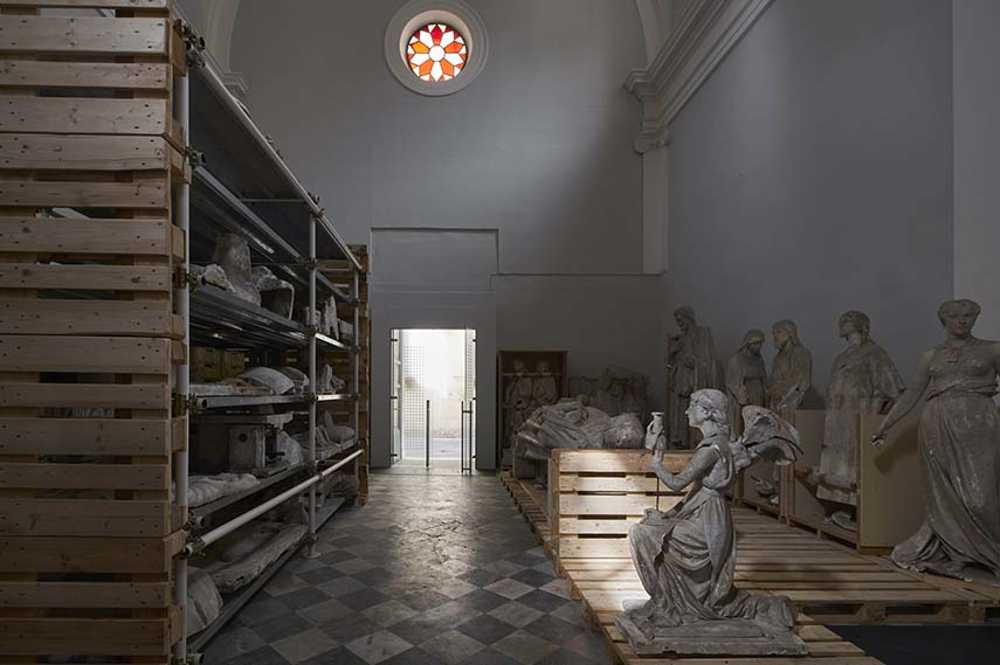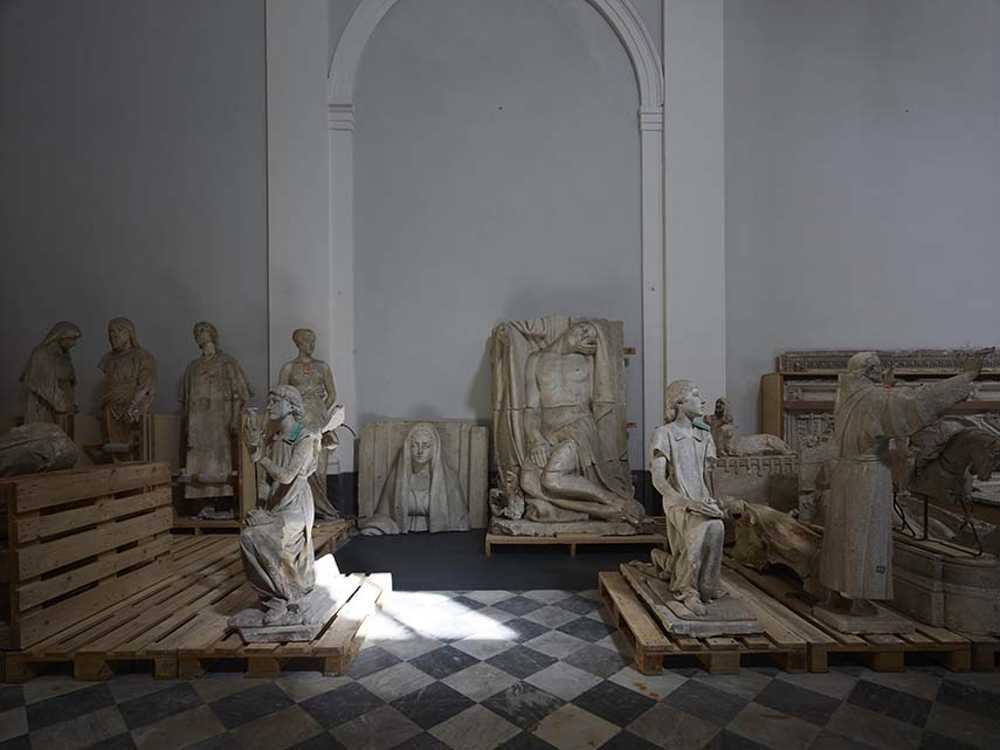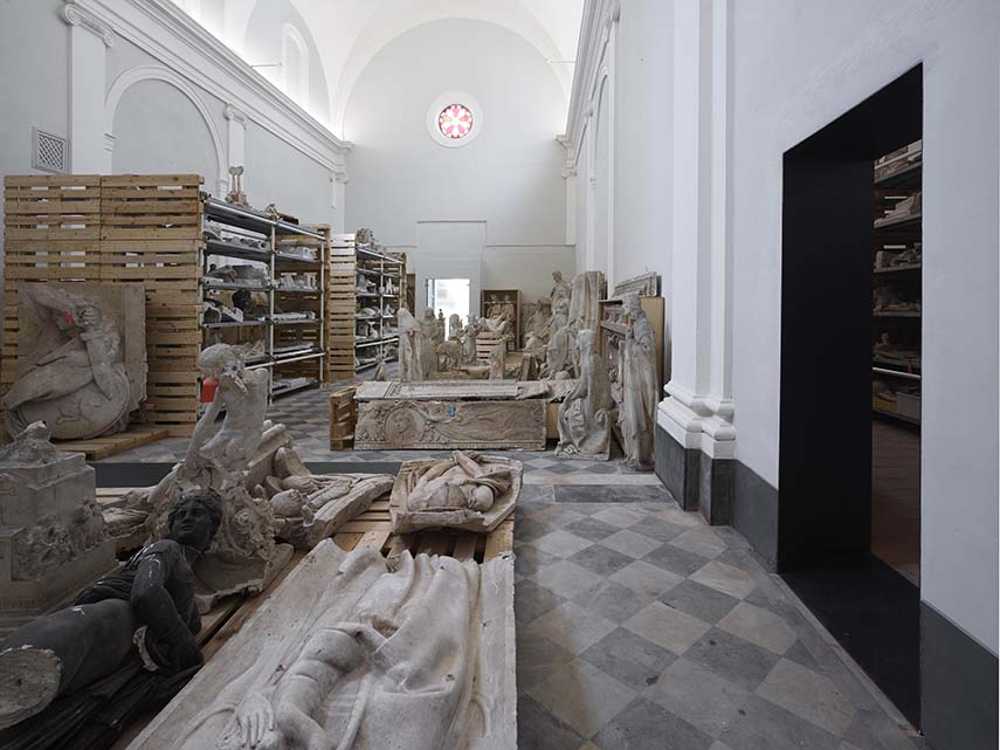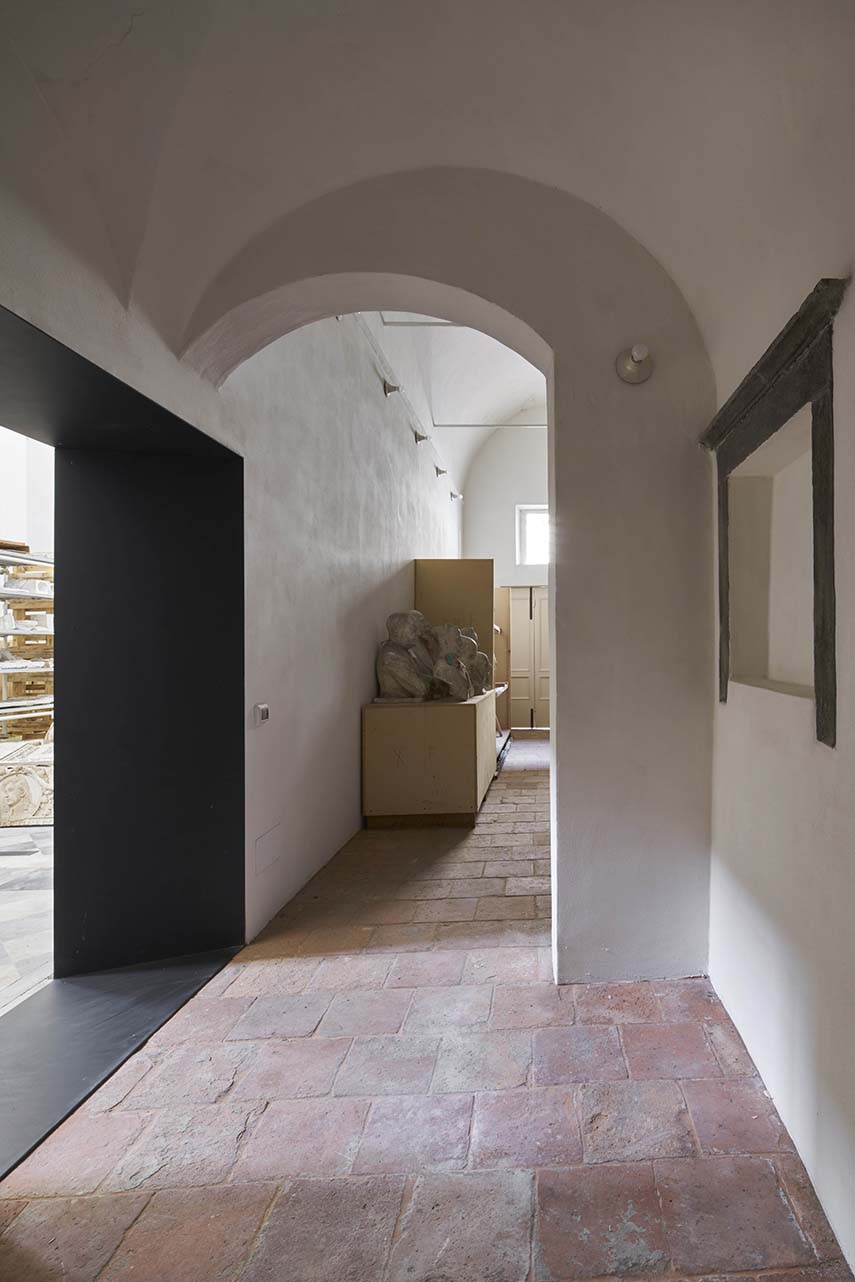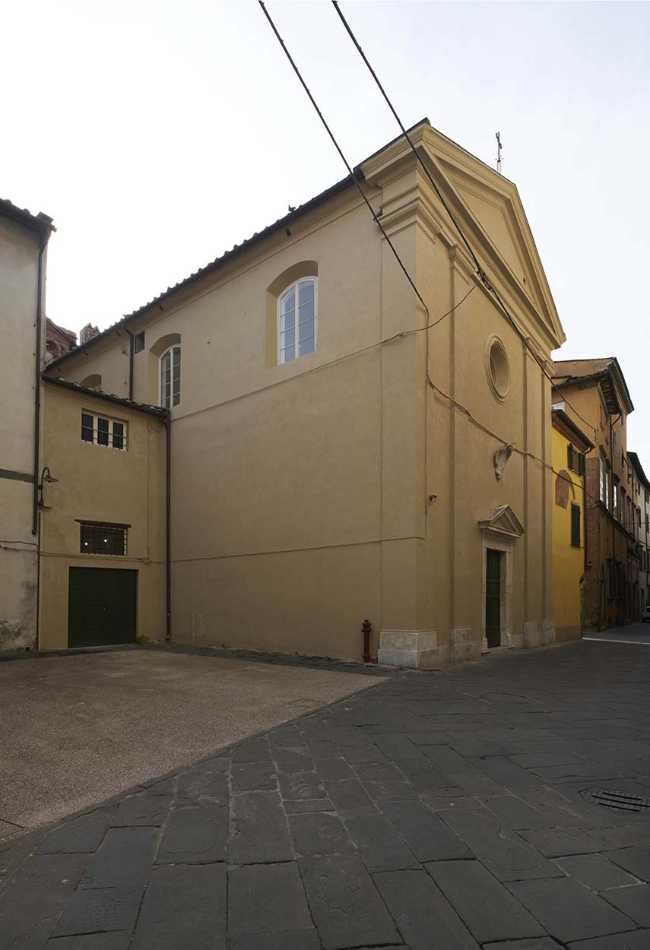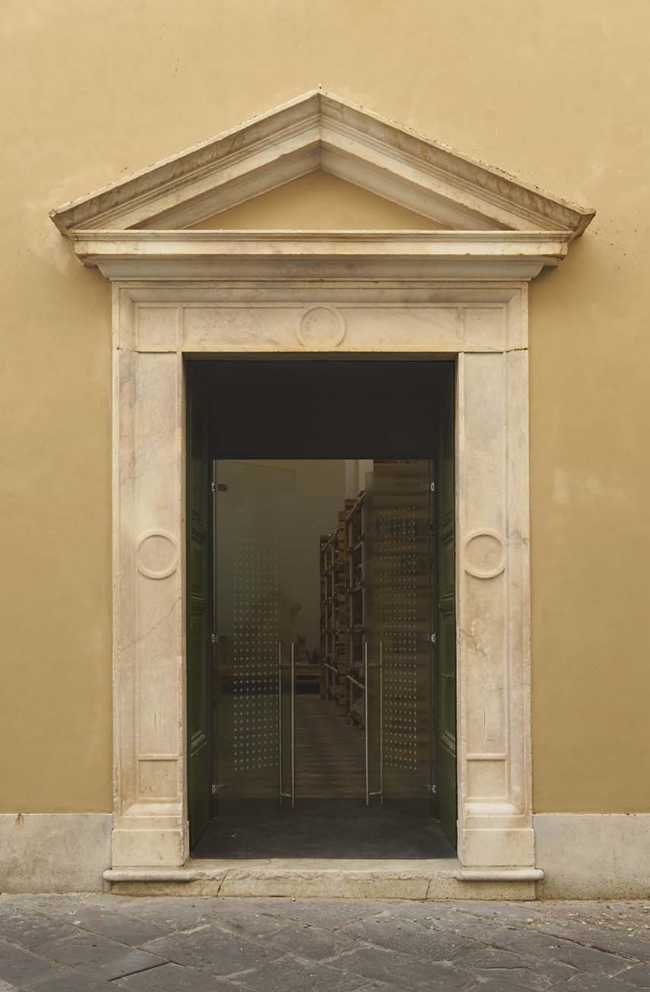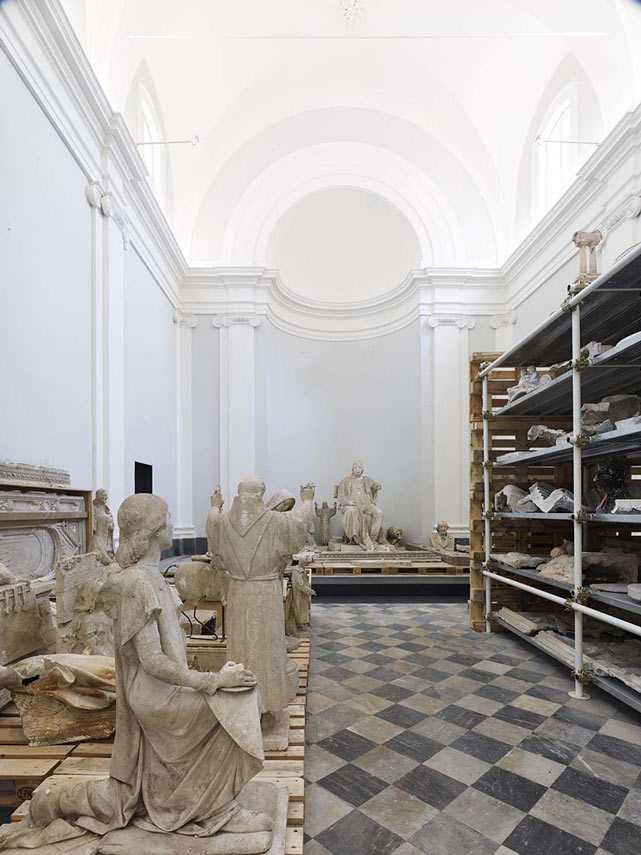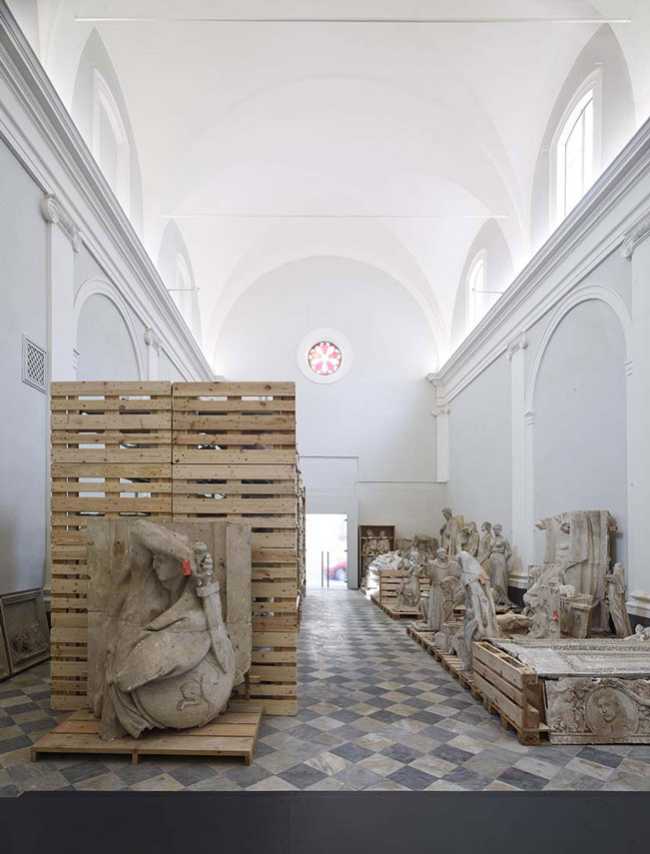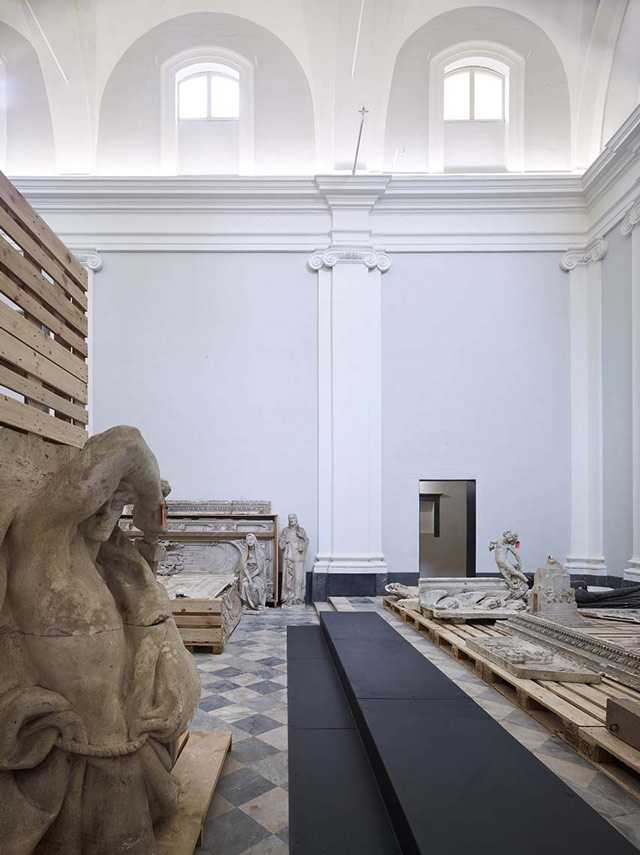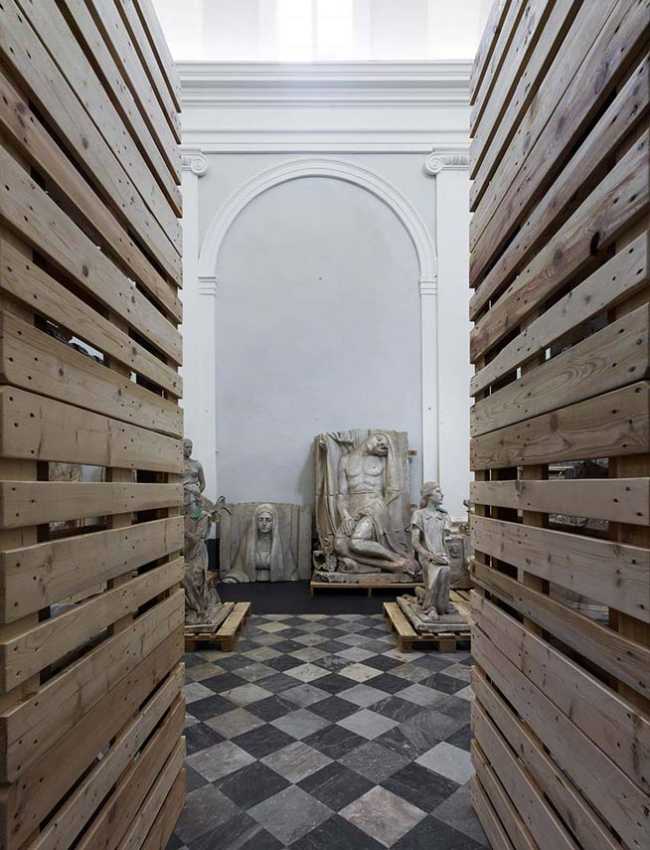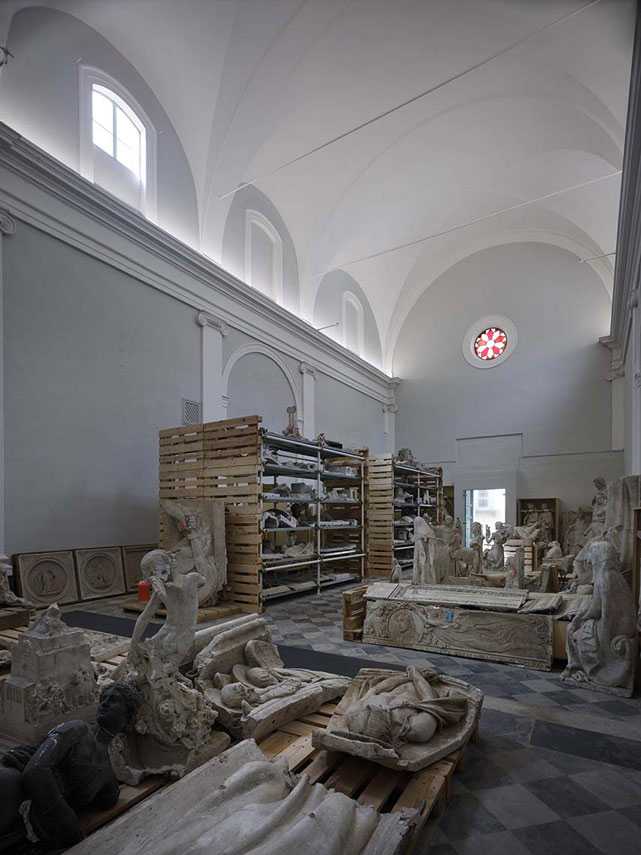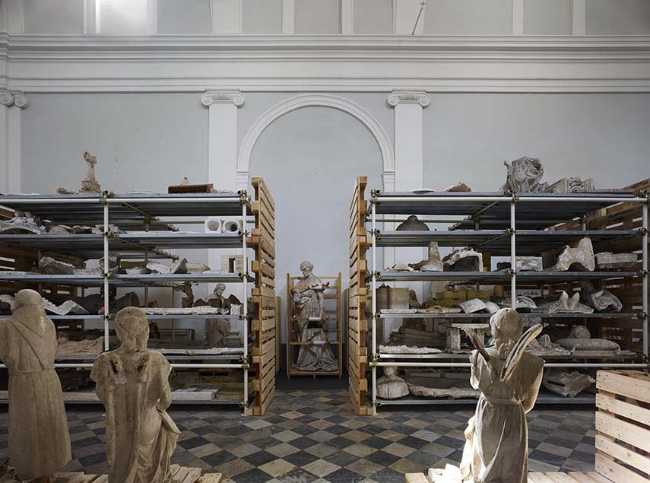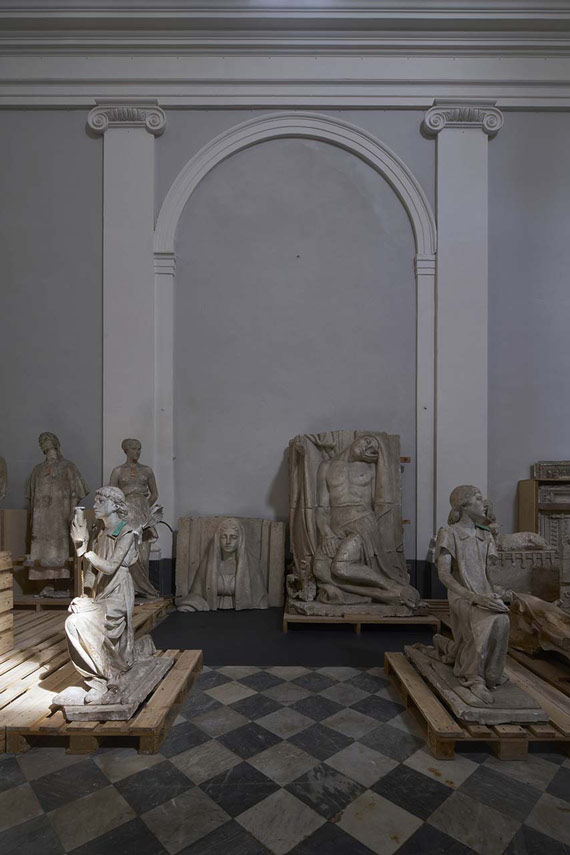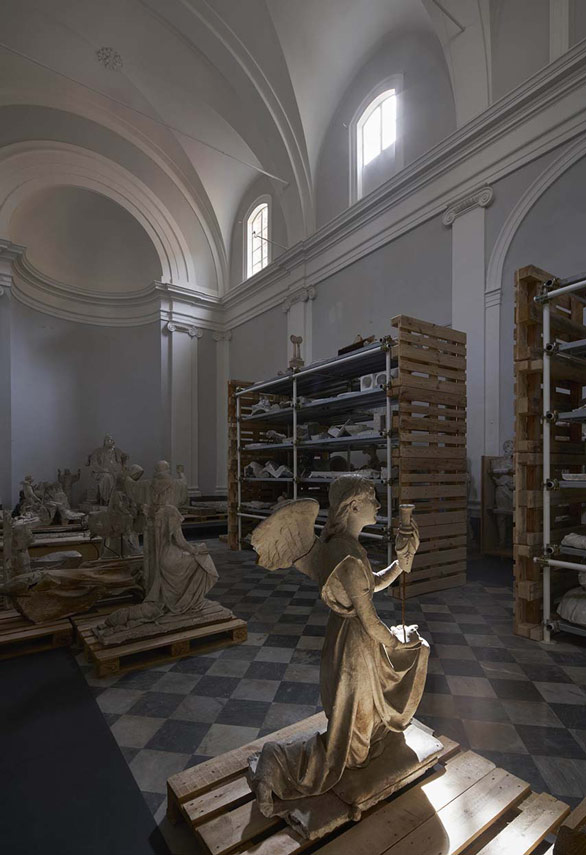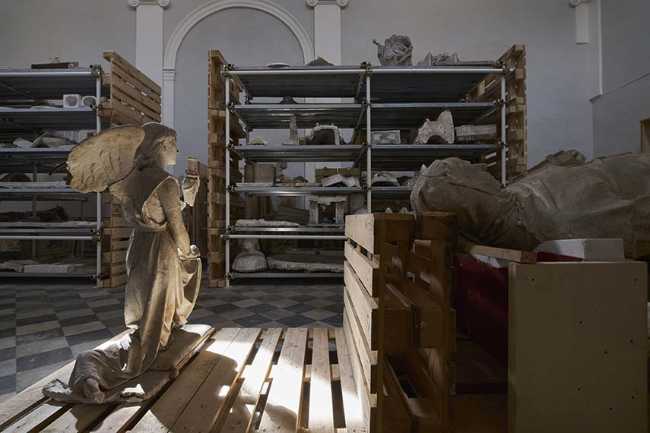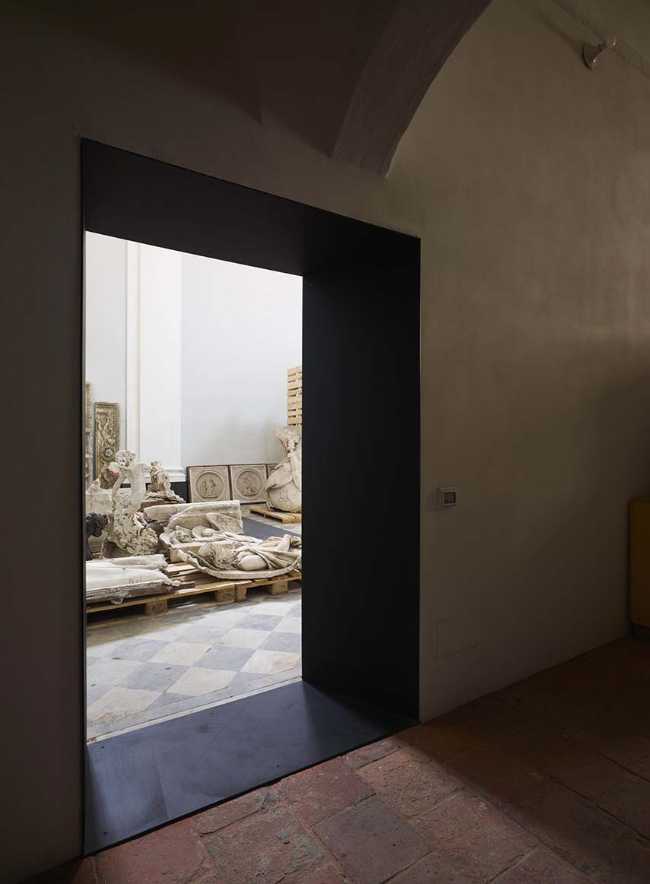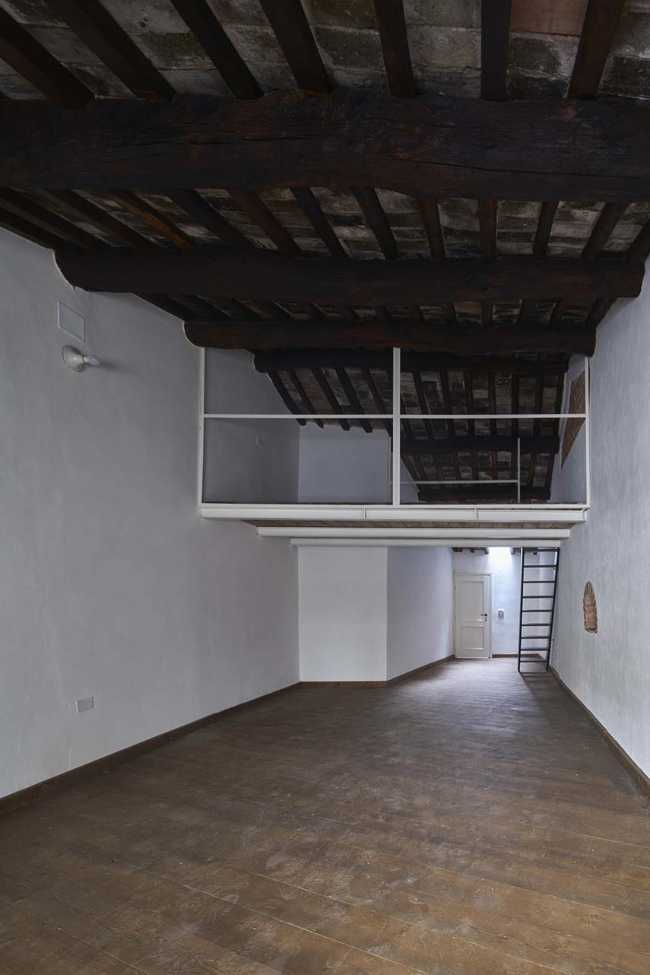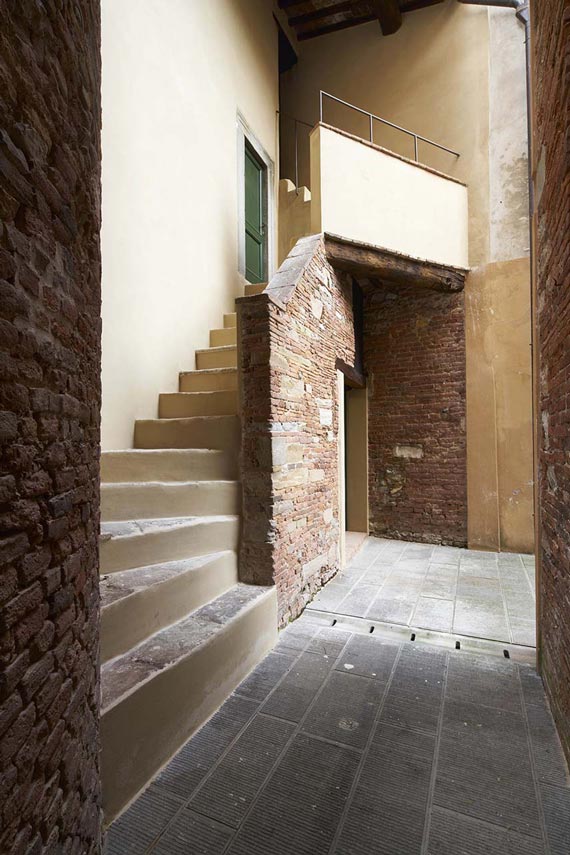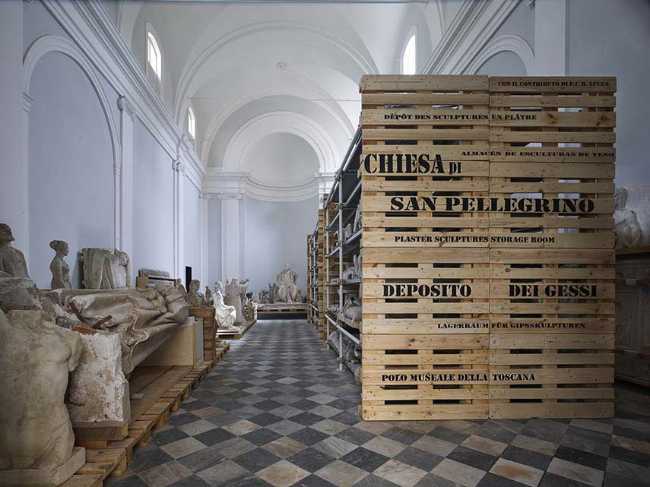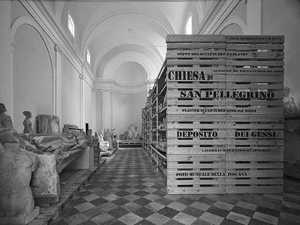The history of the ancient church
In the historic center of Lucca, overlooking the ancient Via San Pellegrino, now Via Galli Tassi and the access route to the city of the Via Francigena, the religious building was in an advanced state of decay when MICROSCAPE architecture urban design was commissioned to restore it. It is believed that the church was built near the ancient San Giorgio gate, the entrance to the ancient Roman fortification walls. In the mid-1600s, it was expanded with a large vaulted hall and became the place of worship for the wealthy families of the neighborhood. In 1808, it was closed for worship and became first an organ workshop and more recently a warehouse

